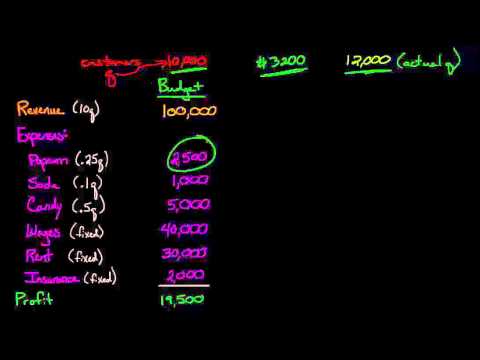
For example, privately-held companies often keep their financial performance data confidential, making it challenging for other organizations to perform comparative benchmarking. It’s important to note that using benchmarking in performance measurement and profitability assessment does not mean a business should aim to merely match the benchmark. The ultimate objective is to exceed these benchmarks and to continuously improve their own standards.
Previous Performance

In conclusion, benchmarking plays a pivotal role in steering companies toward better performance by providing highly valuable what is comprehensive income its income not yet realized comparative industry data. Its emphasis on continuous comparison and adaptation fosters a culture of constant growth and improvement, building a robust, competitive organization in the long run. In other words, cost accountants look at the company past performance and set standards for future performance. For example, a cost accountant or managerial accountant might analysis the level of fixed and variable costs in a production process for the last three years. Financial benchmarking requires two key things–a basic understanding of what you’re trying to achieve and the financial data required to establish benchmarks.
The Bench platform gives you monthly financial statements and expense overviews to keep you in control of your money. At-a-glance visual reports help you see the big picture and give you actionable insights to help you grow your business. It’s not always possible to find reliable, up-to-date data, especially if there are no comparable public companies or associations that publish benchmarks. Both of them are lower than industry averages, which tells you that you need to streamline inventory management and improve receivables collection–there’s no need for more capital.
Licensing Revenue Model: An In-Depth Look at Profit Generation
Cloud-based finance systems also prove to be an asset in fixing the problems you identify with benchmarking. Industry associations often publish financial benchmarks for the relevant industry. You can benchmark and monitor dozens of financial metrics, but it’s best to focus on ones that help you achieve your goals. Factors like company culture, goodwill, and innovation capacity are difficult to quantify but impact various financial benchmarks. Think about it–if you’re a small manufacturing business, you might not find financial data of another manufacturer of the same size because they’re not required to make it public. For instance, a low inventory turnover ratio compared to the benchmark might indicate overstocking or poor demand forecasting.
- Financial modelling tools like Excel, Adaptive Insights, or Anaplan can help you assess the impact of corrective action.
- Benchmarking helps in checking the reasonableness of the assumptions in the model.
- It provides a standard that businesses can strive to achieve and surpass.
- These leaders set a benchmark that other companies aim to achieve, encouraging overall industry-wide progress toward sustainability.
What is Benchmarking?
BI tools like Tableau and Power BI help visualise and analyse internal and external data more effectively. You can use BI tools to create custom dashboards and combine financial and operational data to draw insights that typical visualisation tools can’t offer. Top software solutions offer an extensive feature set, including real-time reports and financial dashboards that allow you to track KPIs and compare them with benchmarks. Private companies are not required to disclose financial data, which can lead to a lack of information needed to establish benchmarks. A clear goal grounded in concrete data helps you develop practical strategies to improve financial performance or address existing problems. Assessing your financial performance is critical to running a successful business.
For instance, a business in the software sector could set an industry benchmark for profit margins. The driving of improvements is another crucial aspect of benchmarking within the financial context. It can be an impetus for progress by uncovering gaps between current performance and the industry’s best practices. It encourages changes in financial and operational procedures by days sales outstanding dso: meaning in finance calculation and applications continuously assessing and comparing them against higher-performing companies or standards.
Managers can then use the average costs over the past three years as a benchmark. It can then judge the current performance against the benchmark and find new way to improve. Each customer’s main point of contact is a dedicated in-house, professionally-trained bookkeeper, based in North America.
If a mutual fund has significantly outperformed other funds with a similar investment strategy, it might be viewed as a more competent choice. Benchmarking, as we’ve already discussed, has widely been accepted as an invaluable tool within the financial world. This process is centered around comparing, understanding, analyzing, and implementing effective strategies that can significantly enhance a company’s performance. One is that a best practice 7 tax deductions for business travel expenses in one organization may not translate over into another business. This is the case when the organizational structures and cultures of the two businesses are different.